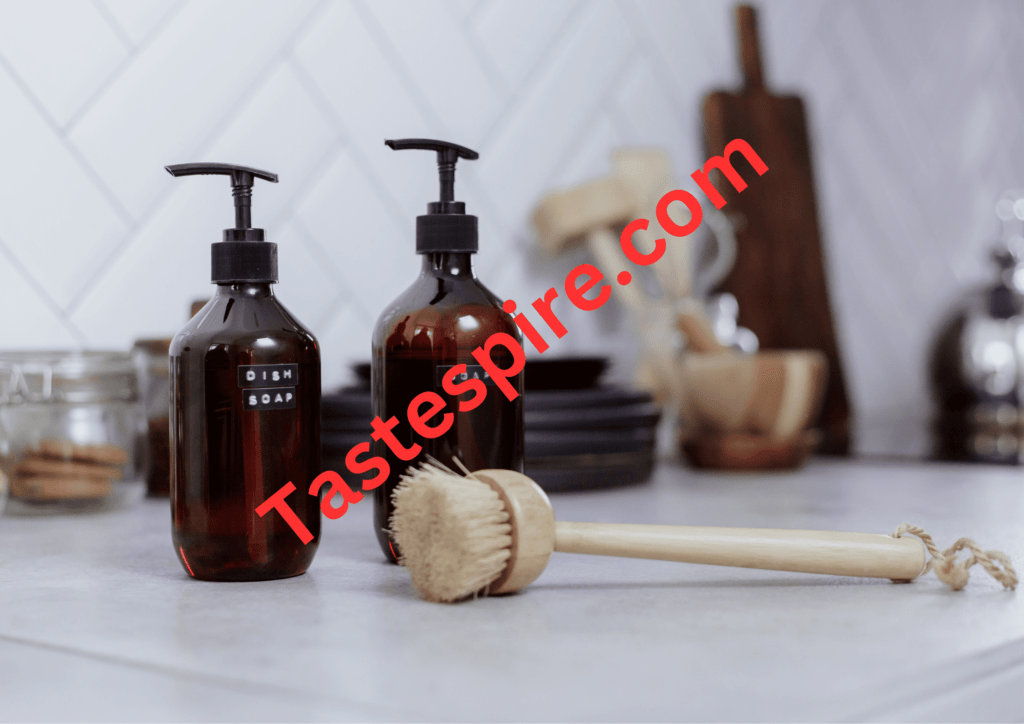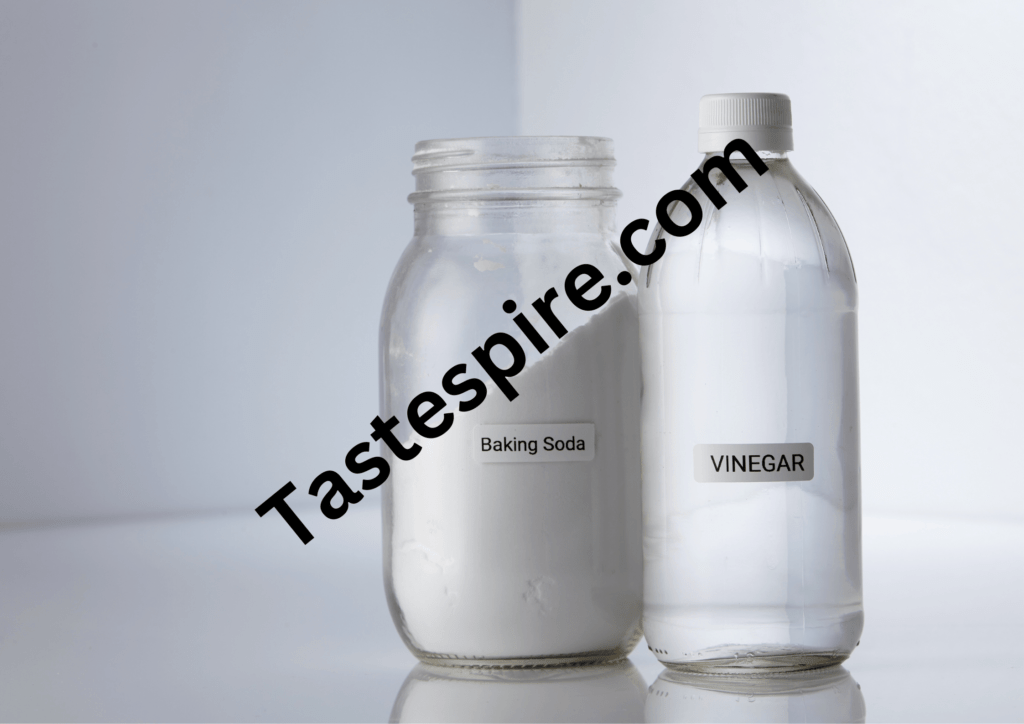Sticky grease on kitchen cabinets can be a real nuisance turning once-pristine surfaces into grimy eyesores. We’ve all been there right? It sneaks up on you accumulating slowly but steadily as you cook up delicious meals day after day. But fear not! In this guide we’ll show you how to clean sticky grease off kitchen cabinets effectively making them shine like new.
Maintaining clean kitchen cabinets is crucial not only for aesthetics but also for hygiene and longevity. Grease buildup not only looks unpleasant but can also attract dust and dirt making your kitchen less inviting. Plus those sticky residues can eventually damage the cabinet finish if left unchecked.
Our mission is to equip you with the knowledge and techniques to tackle this sticky situation head-on. We’ll explore various methods and share valuable tips to help you restore your kitchen cabinets to their former glory. Whether you’re dealing with recently acquired grease or long-standing grime we’ve got you covered. Let’s dive into the transformative world of kitchen cabinet cleaning and bid farewell to stubborn grease.
Table of Contents
Essential Tools and Materials
To effectively clean sticky grease off your kitchen cabinets you’ll need a few essential tools and materials that are readily available:
Tools and Materials:
- Warm Water: This serves as the base for most cleaning solutions.
- Soft Sponge and Scrubber: These help in scrubbing away grease without scratching the cabinet surfaces.
- Dishcloth: Ideal for wiping and drying surfaces after cleaning.
- Soap: Any type of soap will do including liquid dish detergent.
- Baking Soda: Useful for tackling stubborn built-up grease.
- Salt (Optional): For particularly tough grease spots salt can provide additional scrubbing power.
- White Vinegar: An effective natural cleaner for heavy grease stains.
- Citrus All-Purpose Cleaner: Contains citrus oil which is a natural degreaser.
- Diluted Castile Soap (Optional): A gentle option for painted cabinets.
With these tools and materials at your disposal you’ll be well-equipped to tackle sticky grease on your kitchen cabinets effectively.
How to Clean Grease Off Kitchen Cabinets
Here are 6 methods to clean grease off kitchen cabinets:
1. Dish Soap and Water

Cleaning kitchen cabinets might sound like a chore but it’s crucial for maintaining a tidy kitchen. We’ll start with a simple yet effective method dish soap and water.
Detailed Step-by-Step Instructions:
- Begin by mixing a few drops of dish soap (not dishwasher detergent) into a bowl of warm water. The warmth helps dissolve the grease.
- Dip a soft sponge into the soapy solution. The cloth should be moist but not excessively soaked.
- Gently work the sponge over the greasy areas using small circular motions. The dish soap’s grease-cutting properties will start to break down the sticky residue.
- Follow up by rinsing the cabinet surfaces with clean water to remove any remaining soap.
- Ensure the cabinets are completely dry by using a clean dry dishcloth or towel. Moisture left behind can harm the cabinet finish.
Tips:
- Use warm water to enhance the soap’s grease-cutting abilities.
- Choose a gentle non-abrasive sponge to avoid damaging your cabinets.
2. Citrus-Based Multipurpose Cleaner
Next up let’s explore a natural degreaser citrus-based multipurpose cleaners.
Step-by-Step Guide on Using Citrus-Based Cleaners:
- Look for a multipurpose cleaner that contains citrus oil a powerful natural degreaser.
- Spray the citrus-based cleaner directly onto the greasy cabinet surfaces.
- Allow the cleaner to sit for a few minutes giving it time to break down the grease.
- Take a soft damp cloth and gently wipe away the dissolved grease.
- Utilize a fresh moist cloth to eliminate any lingering remnants of the cleaning solution.
- Ensure thorough drying to prevent moisture damage.
Making Your Own Citrusy Cleaning Solution:
You can also create your citrusy cleaning solution. Fill a canning jar three-quarters full with citrus peels and top it off with white vinegar. After two to three weeks of steeping strain out the peels and transfer the liquid to a spray bottle. Apply it the same way you would a store bought cleaner.
3. Baking Soda and Water

When faced with tougher caked-on grease baking soda comes to the rescue.
How to Create a Paste and Apply It:
- Make a paste by mixing equal parts water and baking soda until you achieve a thick consistency.
- Apply this paste to the grease stains using a clean microfiber cloth.
- Use small circular motions to work the paste into the stubborn spots. The slight abrasiveness of baking soda helps dislodge the grease.
- As the cloths become soiled switch to fresh ones.
- After treating all cabinet surfaces use a fresh damp cloth to remove any excess paste.
- Finish by thoroughly drying the cabinets with a dry cloth. Avoid leaving moisture behind as it can damage the cabinet finish.
Caution:
Be mindful not to leave any moisture on the cabinet surfaces as it can lead to visible damage over time.
4. Distilled White Vinegar

Vinegar a kitchen staple possesses natural cleaning properties that can combat stubborn grease.
Detailed Instructions on Using Vinegar:
- Soak a washcloth or paper towel in undiluted white vinegar.
- Wipe down the greasy cabinet areas ensuring they are well-saturated with vinegar.
- Allow the vinegar to work its magic for 10 to 15 minutes.
- Afterward use a damp sponge to gently loosen the grease from the cabinet surfaces.
- Take a water-soaked washcloth and wipe away the loosened grease and vinegar residue.
- Finish by drying the cabinets with a clean dry cloth.
Highlight the Natural Cleaning Properties of Vinegar:
Vinegar’s natural acids make it an effective grease remover without leaving any harmful residue behind.
5. Homemade Castile Soap Spray
If you prefer a DIY approach with natural ingredients a homemade Castile soap spray is an excellent option.
Creating a Homemade Cleaning Solution:
- Fill a 32-ounce spray bottle with the following ingredients:
- 1 cup of white vinegar
- A few drops of liquid soap
- 1 tablespoon of baking soda
- A few drops of essential oil (e.g. lavender or lemon) for fragrance (optional)
- Top off the bottle with warm water filling it up to the neck.
- Give the bottle a good shake to ensure a thorough blend of the ingredients.
- Spray this homemade solution onto your cabinet surfaces and let it sit for a moment.
- Wipe away the grease and residue with a clean damp cloth.
Mention the Benefits of Using Natural Ingredients:
This DIY cleaning solution offers the advantages of natural ingredients for effective cleaning.
6. Store-Bought Cleaners

For those seeking convenience and specialized solutions commercial kitchen cabinet cleaners are readily available.
Commercial Kitchen Cabinet Cleaners:
In this section we will delve into the realm of commercial kitchen cabinet cleaners which offer ease and effectiveness in removing stubborn grease buildup.
World of Commercial Kitchen Cabinet Cleaners:
Commercial kitchen cabinet cleaners come in various formulations and brands. They are designed to target and eliminate grease and grime efficiently. These products have been developed to address the specific challenges of kitchen cabinet cleaning.
By the end of this section you will be well-equipped with the knowledge needed to make the best decision when opting for store-bought cleaners to keep your kitchen cabinets in pristine condition.
How to Clean Greasy Oak Cabinets

Oak cabinets add a warm and inviting touch to kitchens but they require special care when combating greasy buildup. Cleaning oak cabinets involves specific considerations to ensure their longevity and beauty.
- Understanding Oak Cabinets: Oak cabinets are known for their durability and natural beauty. However their unique grain and porous wood surface can trap grease and grime making regular cleaning essential to preserve their appearance.
- Cleaning with Vinegar: To clean greasy oak cabinets vinegar can be a valuable ally. Mix white vinegar with water creating a gentle yet effective cleaning solution. Dampen a soft cloth or sponge with the diluted vinegar and wipe down the cabinets. The natural acidity of vinegar helps break down grease without causing harm.
- Additional Considerations: While vinegar is suitable for most oak cabinets it’s crucial to test a small inconspicuous area first to ensure it doesn’t affect the finish. If the cabinets have a stubborn buildup you may need to let the vinegar solution sit for a few minutes before wiping it clean.
- Preserving Oak’s Radiance: Regular maintenance is key to preserving the radiance of your oak cabinets. Avoid abrasive materials or harsh chemicals that can damage the wood. Instead opt for gentle cleaning solutions and soft cloths to ensure your oak cabinets remain a stunning focal point in your kitchen.
Following these oak-specific cleaning steps will help you bid farewell to sticky grease allowing your oak cabinets to shine as if they were brand new.
Removing Stubborn Grease

For those battling stubborn long-standing grease buildup on kitchen cabinets fear not effective solutions are at hand. To tackle this tenacious problem we’ll utilize the formidable combination of baking soda and targeted scrubbing techniques.
The Baking Soda Solution:
Baking soda a kitchen staple with remarkable grease-cutting properties will be our primary weapon. Follow these steps:
- Preparation: Begin by slightly dampening a clean sponge or cloth. Avoid using excessive water as we don’t want to saturate the cabinets.
- Baking Soda Application: Sprinkle a generous amount of baking soda onto the damp sponge or cloth. The baking soda should adhere to the surface without forming a paste.
- Scrubbing Strategy: Gently but firmly start scrubbing the affected areas with the baking soda-laden sponge or cloth. Use circular motions applying moderate pressure to dislodge the stubborn grease.
- Repeat if Necessary: For exceptionally stubborn buildup you may need to repeat the process. Ensure you don’t scrub too vigorously to avoid damaging the cabinet’s finish.
- Rinse and Dry: After successfully removing the grease rinse the cabinets with a clean damp cloth to eliminate any remaining baking soda residue. Dry the surface with a separate dry cloth to prevent moisture damage.
By utilizing baking soda and these scrubbing techniques you can effectively bid farewell to long-standing grease restoring your kitchen cabinets to their former glory. Remember patience and a gentle touch are key to preserving the cabinet’s finish.
Preventing Grease Build-Up
Preventing the sticky issue of grease accumulation on your kitchen cabinets is not only efficient but also cost-effective. By adopting some simple preventive measures you can significantly reduce the hassle of dealing with built-up grease. Here’s how:
- Splatter Guards: Invest in quality splatter guards for your stove. These handy kitchen accessories act as a shield preventing hot oil and food splatters from reaching your cabinets in the first place.
- Regular Cleaning Routine: Make it a habit to wipe down your kitchen surfaces regularly especially after cooking. Using a diluted soap solution gently clean areas prone to grease splatters like the stove vicinity and cabinet fronts. This routine maintenance will thwart grease from becoming a stubborn issue.
- Handwashing While Cooking: Often overlooked but highly effective simply washing your hands frequently while cooking can prevent the transfer of oils and grease to different surfaces in your kitchen including your beloved cabinets.
By incorporating these preventive measures into your kitchen routine you’ll not only maintain cleaner cabinets but also save time and effort on grease removal in the long run. A little prevention goes a long way in ensuring your kitchen remains a welcoming and grease-free space.
Aftercare and Cabinet Maintenance
Once you’ve successfully cleaned the sticky grease off your kitchen cabinets, it’s essential to focus on aftercare and maintenance. This not only ensures your cabinets stay clean but also extends their life and keeps them looking their best. Here’s what you should consider:
- Beeswax Polish: For wood cabinets, using a high-quality beeswax polish is an excellent choice. Apply a thin layer of beeswax polish to your cabinets after cleaning and drying them. This not only restores their shine but also acts as a protective barrier against future grease and moisture.
- Regular Cleaning Routine: To maintain your cabinets’ cleanliness and prevent the buildup of grease establish a regular cleaning routine. Periodically wipe down cabinet surfaces, handles and knobs with a mild soap solution. This simple step can go a long way in preventing stubborn grease from returning.
- Inspect and Repair: Take the time to inspect your cabinets for any signs of wear or damage. Address issues promptly such as loose handles hinges or chipped paint. Addressing maintenance issues promptly can help avoid additional harm and the need for expensive substitutions.
- Avoid Excess Moisture: Be cautious about excess moisture around your cabinets. Ensure your sink area is well-sealed to prevent water from seeping into the cabinet’s interior. Excess moisture can lead to warping or discoloration.
By implementing these aftercare practices you’ll not only enjoy clean and well-maintained kitchen cabinets but also extend their lifespan keeping your kitchen a welcoming and functional space for years to come.
Additional Tips and Tricks
In addition to the primary cleaning methods and maintenance suggestions here are some extra tips and tricks to help you keep your kitchen cabinets in top-notch condition:
- Microfiber Magic: Invest in microfiber cloths for cleaning and wiping down cabinets. These cloths are highly effective at capturing and removing grease and dirt without leaving streaks or lint behind.
- Cabinet Liners: You may want to explore the option of employing cabinet liners or shelf liners. These protective sheets not only add a decorative touch but also create a barrier between your dishes and cabinet surfaces preventing the direct transfer of grease.
- Regularly Empty and Clean: Periodically empty out your cabinets especially those with food items and give them a thorough cleaning. This prevents hidden spills or leaks from turning into stubborn stains.
- Label and Organize: Keep your cabinets organized to reduce spills and accidents. Clearly label containers and use organizers to separate different items. This can minimize the chances of messy spills that lead to grease buildup.
- Grease-Resistant Paint: If you’re planning a cabinet renovation or paint touch-up opt for grease-resistant paint. This specialized paint is designed to repel grease and make cleaning easier.
- Professional Cleaning: For deep cleaning or when dealing with particularly stubborn grease consider professional cabinet cleaning services. They have the expertise and tools to restore your cabinets to their original shine.
By incorporating these additional tips and tricks into your cabinet maintenance routine you can enjoy cleaner and more organized kitchen cabinets while minimizing the effort required to keep them that way.
Frequently Asked Questions (FAQs)
Q1: How do you remove old sticky grease from cabinets?
To remove old sticky grease try a mixture of baking soda and water to create a paste. Apply it to the affected area let it sit for a few minutes and then scrub with a cloth or sponge. Wipe away residue with a damp cloth.
Q2: What is the best thing to degrease kitchen cabinets with?
One of the best natural degreasers for kitchen cabinets is a mixture of white vinegar and water. The acidity in vinegar helps break down grease effectively. Combine equal parts vinegar and water apply it and wipe away the grease.
Q3: How do you clean the top of greasy kitchen cabinets?
Cleaning the tops of greasy kitchen cabinets can be done by using the same methods as for the cabinet doors. Try a vinegar and water solution baking soda paste or a commercial degreaser. Reach the top with a ladder or step stool.
Q4: How do you remove old hardened grease?
Old hardened grease may require some extra effort. Start with a warm soapy water soak to soften it. Then use a mixture of baking soda and water or a vinegar solution to scrub the area. For stubborn spots consider using a plastic scraper or credit card to gently lift the grease.
Conclusion
In conclusion keeping your kitchen cabinets free from sticky grease is not only achievable but also essential for maintaining a clean and hygienic kitchen environment. Here are the key takeaways from this article:
- Regular Cleaning Matters: Don’t underestimate the power of routine cleaning. Regularly wiping down your cabinets can prevent grease buildup and make your cleaning efforts much more manageable.
- Simple and Effective Solutions: You don’t need harsh chemicals to combat grease. Simple household items like dish soap, vinegar, baking soda and citrus-based cleaners can work wonders.
- Tailored Cleaning for Wood: If you have wooden cabinets specific methods like using vinegar or Castile soap can help you remove grease without harming the wood’s finish.
- Tackle Stubborn Grease: For stubborn long-standing grease, baking soda is your secret weapon. Its abrasive properties can cut through the toughest buildup.
- Prevention Is Key: Implement preventive measures like splatter guards regular handwashing during cooking, and using cabinet liners to reduce future grease accumulation.
- Aftercare Matters: Maintaining your cabinet finishes with products like beeswax polish can extend their lifespan and keep them looking like new.
Remember a clean kitchen is a happy kitchen and your cabinets play a significant role in this. By following the cleaning methods and tips provided in this article and making them a part of your regular kitchen routine you’ll enjoy clean and grease-free cabinets that enhance the overall beauty and functionality of your kitchen.
